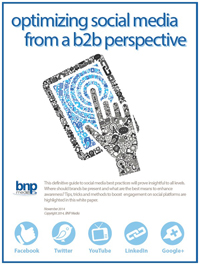Networking is Like a Game of Golf
What to expect when you start networking

Imagine this: You are a reasonably decent golfer, preparing to tee off from a 415-yard, par 4, dog-leg right. In case you’re not a golfer, that’s a pretty long shot and the hole isn’t straight ahead; it’s around a corner and out of sight. At that moment, what is a reasonable expectation for your first shot?
Drop the ball in the cup? Probably not! Even the best golfers in the world wouldn’t have that expectation.
A reasonable expectation would be to hit the ball down the fairway far enough and straight enough to get you at the bend of the dog-leg where you can see the green.
From there, you hope to land the ball on the green with your second shot. Then, with steady play, you look to two-putt it and achieve par. Congratulations!
What does any of this have to do with networking? Well, everything if you think about it.
When you walk into that networking event -- whether it is a business afterhours, a Chamber event, or (coincidently enough) a golf outing – it’s the equivalent of preparing to tee off from a 415-yard, par 4, dog-leg right. The objective or expectation should not be to close business, which is the golfing equivalent of dropping the ball in the cup.
After all, people are there simply to network. They want to reconnect with familiar faces (and maybe meet some new ones), have a warm cup of coffee or a cold beer, and casually talk about life, the weather, sports and the insanity of our elected officials. The subject of business may not even come up.
Know this: No one is at the event thinking, "I sure hope I meet someone who can help me with my basement mold issue." And no one showed up carrying a check with your name on it (unless, of course they owed you money … it which case, get the money NOW!).
You may be thinking, “Isn’t that just socializing?” Well, yes and no.
Let's work through a potential scenario … You show up at an afterhours, get your name tag and a drink, and start to mingle. The first person you meet is an elderly gentleman. Through the course of small talk, you learn that he is retired after a successful career as CFO of a local mid-sized company. Although retired, he remains active in the community, devoting time with Rotary.
Though you don't share much about your business, you share enough to intrigue him. He remarks, "WOW! I bet you have some interesting experiences. I would love to connect you with the program chair of our Rotary Club. We are always looking to hear about the stories of others in our community."
Now, there’s no money in speaking to the Rotary. Yet, not one to say “NO”, you agree and later than month you’re standing in front of the Rotary Club sharing stories about moldy basements and backed up sump pumps. The audience seems to enjoy your presentation and you chat with the Rotarians while enjoying your free lunch.
One of your table mates, a seasoned financial advisor, asks if you’re available to do the same program for his HOA (you see, his wife is the President of the HOA and has tasked him with getting a speaker for an upcoming meeting). He asks, "Could you come out to the Marble Hill HOA and do that same program two weeks from Tuesday night?"
You wonder if this is the "highest and best use" of your time. After all, the Marble Hill subdivision is brand new with million dollar homes situated so far up from the flood plain that basement water will likely never be an issue. But you’re not busy that night, so you again agree to speak.
Two weeks later you take your program to the Marble Hill HOA meeting and entertain another mass of strangers with sage advice on protecting their "finished basement" investments. By this time you start to think. "Why am I wasting my time speaking to groups? There’s no money in this and I need customers!"
But, as you are leaving, a woman approaches and says, "Can you do anything about attic mold? My sister and brother-in-law just purchased a small apartment complex and it seems the previous owner didn’t properly vent eight bathrooms in the attic. It wasn’t picked up on inspection and now they have a terrible mold problem. The city is threatening to condemn the building and the tenants are talking about suing! Can you help?"
“Absolutely!” you confidently respond. And two days later, you are zipping up a white hazmat suit and your month is made.
So, back to my golfing analogy. You drove the ball straight down the fairway when you connected with the retired CFO who’s in the Rotary. Your second shot - speaking to the Rotary, chatting with people over lunch, and connecting with the gentleman whose wife needed a speaker for the HOA meeting – landed solidly on the green. Third shot – speaking to the HOA (even though in your mind they would have no need for your services). And the “tap into the cup” was the lady with the attic mold situation, a conversation that resulted in a huge contract and the potential for more business via referrals from the satisfied customer.
This is networking. It might not work exactly like this. But it follows a similar pattern. Something completely unrelated leads to something else, which leads to something else and then another thing. In time, business happens (often when you least expect it). You simply need to meet lots of people and then patiently wait to see where it leads.
Looking for a reprint of this article?
From high-res PDFs to custom plaques, order your copy today!








